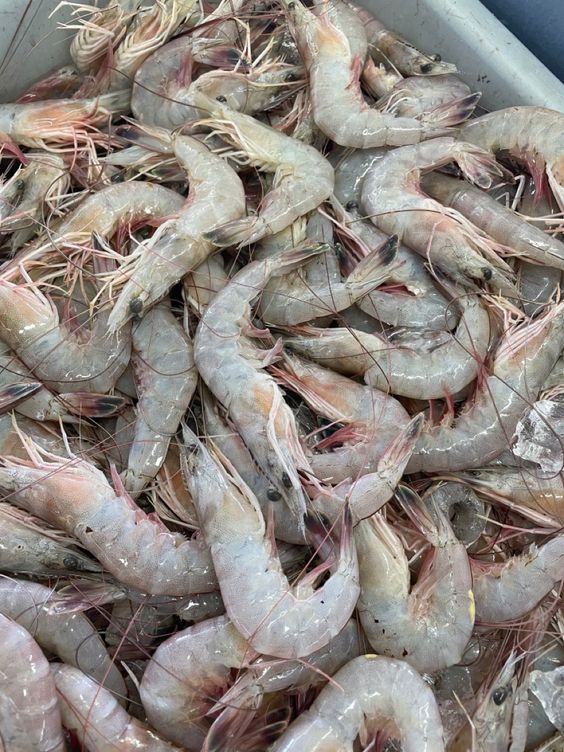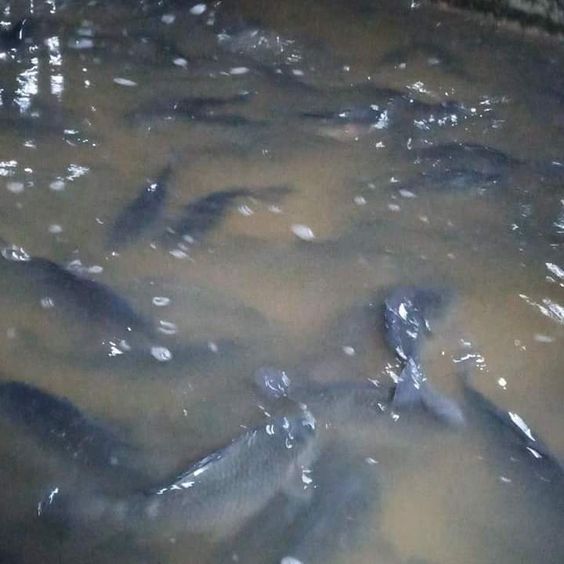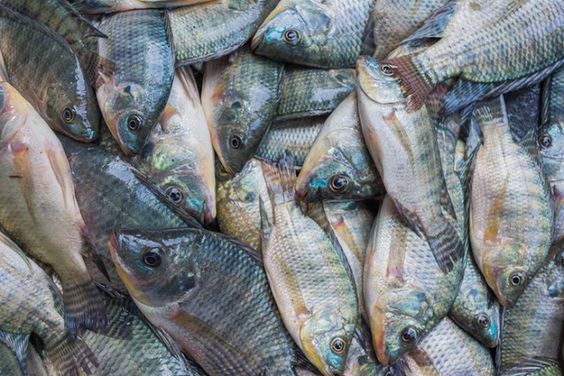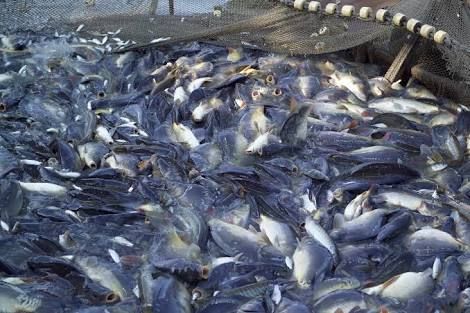Organic Shrimp Cultivation: A Sustainable Approach to Delicious Seafood
Organic Shrimp Cultivation,The global demand for shrimp continues to rise, driven by its taste, versatility, and nutritional value. However, conventional shrimp farming practices often raise concerns about environmental impact and antibiotic use. Organic shrimp cultivation offers a solution, providing consumers with a healthy, eco-friendly alternative. This comprehensive guide delves into the world of organic shrimp cultivation, exploring its benefits, goals, practical implementation ideas, and valuable suggestions for successful shrimp farming.
Contents
Benefits of Organic Shrimp Cultivation
Organic shrimp cultivation boasts a range of benefits for consumers, farmers, and the environment. Let’s explore these advantages in detail.
-
Consumer Benefits:
- Healthier Choice: Organic shrimp are raised without antibiotics, growth hormones, or synthetic chemicals, resulting in a healthier and safer product for consumers.
- Superior Taste: Studies suggest organic shrimp may have a richer flavor and firmer texture compared to conventionally farmed shrimp.
- Environmental Responsibility: Choosing organic shrimp supports sustainable farming practices, promoting biodiversity and minimizing environmental pollution.
-
Farmer Benefits:
- Improved Water Quality: Organic practices promote natural water filtration and nutrient cycling within ponds, reducing reliance on chemicals and lowering operating costs.
- Enhanced Disease Resistance: Healthy ecosystems created by organic methods can foster stronger and more disease-resistant shrimp populations.
- Premium Market Access: Organic shrimp often command higher market prices, allowing farmers to earn a greater profit.
-
Environmental Benefits:
- Reduced Pollution: Organic practices eliminate the use of harmful chemicals and antibiotics, minimizing water pollution and protecting surrounding ecosystems.
- Enhanced Biodiversity: Organic shrimp farms typically encourage the growth of natural flora and fauna, fostering a diverse and healthy environment.
- Sustainable Resource Management: Organic methods promote responsible water and soil management, contributing to the long-term health of the aquaculture system.
Goals of Organic Shrimp Cultivation
The primary goals of organic shrimp cultivation are to:
- Produce high-quality, healthy shrimp: This is achieved by providing a natural environment in which shrimp can thrive without exposure to harmful chemicals or antibiotics.
- Protect the environment: Organic practices aim to minimize pollution, conserve resources, and promote biodiversity within the aquaculture system.
- Ensure the sustainability of shrimp farming: By focusing on long-term ecological balance, organic methods help to ensure the viability of shrimp farming for future generations.
- Enhance farmer profitability: Organic certification allows farmers to access premium markets and potentially increase profit margins.
Ideas and Suggestions for Organic Shrimp Cultivation
Transforming your shrimp farm into an organic operation requires careful planning and implementation. Here are some key ideas and suggestions to consider:
-
Pond Selection and Preparation:
- Location: Choose a site with good water quality, access to clean saltwater or freshwater, and minimal risk of contamination from surrounding areas.
- Pond Design: Design ponds with appropriate depth, size, and water flow to ensure optimal water quality and oxygen levels. Consider incorporating natural filtration systems using mangroves or wetland plants.
- Soil Management: Analyze soil composition and address any deficiencies organically. Utilize compost, manure, or other organic amendments to improve soil health and promote natural food production for shrimp.
-
Water Management:
- Water Source: Utilize clean and disease-free saltwater or freshwater sources. Regularly monitor water quality parameters like salinity, temperature, dissolved oxygen, and ammonia levels.
- Biofloc Technology: Consider implementing biofloc technology, where microbial communities are encouraged to break down organic matter and improve water quality naturally.
-
Stocking and Seeding:
- Species Selection: Choose disease-resistant shrimp species suitable for organic farming conditions. Consider native species adapted to your local environment.
- Stocking Density: Maintain a low stocking density to minimize competition for resources and prevent stress on the shrimp population.
-
Organic Feed Management:
- Formulation: Develop or source certified organic shrimp feeds formulated with natural ingredients like fishmeal, plant proteins, and algae.
- Feeding Practices: Implement proper feeding strategies to avoid excess waste and maintain good water quality. Regularly monitor shrimp growth and adjust feeding rates accordingly.
-
Disease Prevention and Management:
- Preventative Measures: Maintain optimal water quality, low stocking density, and a healthy pond ecosystem to reduce disease outbreaks.
- Natural Treatments: Utilize natural disease prevention methods such as probiotics, prebiotics, and immunostimulants to support the shrimp’s immune system. As a last resort, consider organic-approved treatments under strict guidelines.
Record Keeping and Certification
Maintaining detailed records is crucial for organic shrimp cultivation. This documentation helps demonstrate adherence to organic standards and facilitates certification. Here are some key points to consider:
- Record all inputs: This includes organic feed types and quantities, any organic amendments added to ponds, water quality parameters, and any natural treatment applications.
- Track shrimp health: Monitor shrimp growth rates, mortality rates, and any signs of disease outbreaks.
- Maintain a clear chain of custody: Document the movement of shrimp from stocking to harvest, ensuring traceability throughout the production process.
Organic certification involves a rigorous inspection process by accredited agencies. Here are some additional suggestions:
- Research organic standards: Familiarize yourself with the specific organic shrimp farming standards set by relevant organizations in your region. These standards may vary slightly but generally emphasize natural inputs, responsible resource management, and avoidance of prohibited substances.
- Choose a certification body: Contact accredited organic certification bodies to understand their requirements and application procedures.
- Prepare for inspection: Organize your records beforehand and demonstrate a thorough understanding of organic principles and best practices.
Marketing and Selling Organic Shrimp
Once your shrimp farm achieves organic certification, you can leverage this advantage to market and sell your product effectively. Here are some suggestions:
- Highlight the benefits: Emphasize the health, environmental benefits, and superior taste of your organic shrimp.
- Target specific markets: Identify consumers interested in sustainable seafood and organic products. Farmers markets, specialty stores, and restaurants catering to health-conscious clientele are potential targets.
- Develop a strong brand identity: Create a brand that resonates with your target market and clearly communicates the organic and sustainable nature of your shrimp.
- Direct marketing opportunities: Consider online platforms, social media marketing, or collaborating with local chefs to promote your organic shrimp.
Challenges and Considerations
While organic shrimp cultivation offers numerous advantages, it also presents certain challenges to consider:
- Lower Yields: Organic methods often result in slightly lower shrimp yields compared to conventional practices. This can be offset by premium market prices.
- Increased Management Intensity: Organic shrimp farming requires a deeper understanding of ecological processes and a more intensive management approach compared to conventional methods.
- Market Availability: Organic certification processes can be time-consuming and expensive. Finding markets willing to pay a premium for organic shrimp may require additional effort.
- Technical Expertise: Successfully implementing organic shrimp farming techniques may require acquiring knowledge of water quality management, natural feed production, and disease prevention strategies.
Continuous Learning and Improvement
Organic shrimp cultivation is a dynamic field with ongoing research and development. Here are some ways to stay current and improve your practices:
- Connect with other organic shrimp farmers: Networking with other producers allows you to share experiences, learn from their successes and challenges, and stay updated on the latest advancements.
- Participate in workshops and training programs: Numerous organizations offer workshops and training programs specifically designed for organic shrimp farmers. These programs can provide valuable insights and practical skills.
- Stay informed about research: Keep yourself updated on the latest research findings related to organic shrimp farming, including advancements in disease management, feed formulations, and water treatment technologies.
Conclusion Organic shrimp cultivation offers a promising path towards a sustainable and healthy future for the shrimp farming industry. By embracing organic principles, shrimp farmers can contribute to environmental protection, consumer health, and long-term viability of this vital food source. While challenges exist, the potential rewards – healthier shrimp, a thriving ecosystem, and a profitable business – make organic shrimp cultivation a worthwhile endeavor. With careful planning, dedication, and continuous learning, you can successfully navigate the world of organic shrimp farming and contribute to a more sustainable seafood industry.






